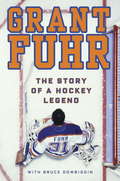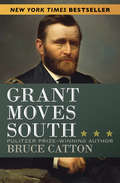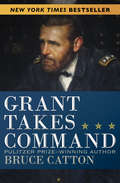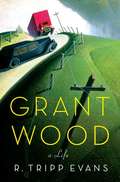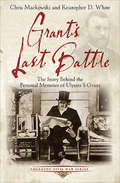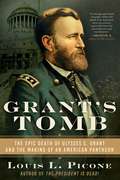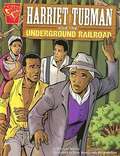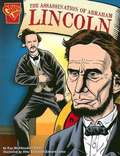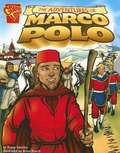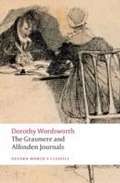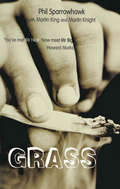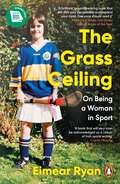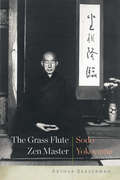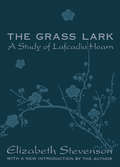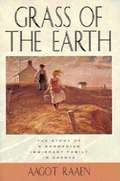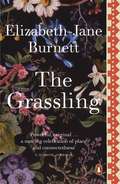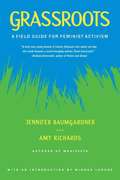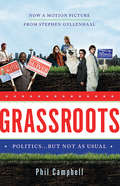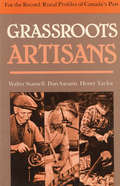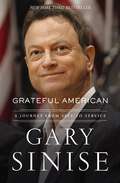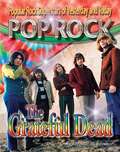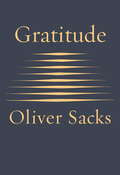- Table View
- List View
Grant Fuhr
by Bruce Dowbiggin Grant FuhrThe Hall of Fame story of Grant Fuhr, the first black superstar in the National Hockey League and the last line of defense for the Edmonton Oilers dynasty, told through Fuhr's 10 most important games.Grant Fuhr was the best goalie in the league at a time when hockey was at its most exciting. Wayne Gretzky's Edmonton Oilers were arguably the greatest team in league history, and during the 1980s arguably the most popular team across the United States, even if many had little idea where Edmonton was. They were that good. And so was Fuhr: Gretzky called him the best goaltender in the world.Fuhr broke the colour barrier for NHL goaltenders when he played his first game for the Oilers in 1981, and was an inspiration for later players including future Hall of Famer Jarome Iginla. But in addition to their dynastic run of Stanley Cup championships, the Oilers were also synonymous with the excesses of the decade: Fuhr himself was suspended for substance use, a discredit he had to fight back from--and did, going on to set career records and earning election to the Hall of Fame in his first year of eligibility.
Grant Moves South: Grant Moves South And Grant Takes Command
by Bruce CattonA Pulitzer Prize-winning historian's acclaimed Civil War history of the complex man and controversial Union commander whose battlefield brilliance ensured the downfall of the Confederacy Preeminent Civil War historian Bruce Catton narrows his focus on commander Ulysses S. Grant, whose bold tactics and relentless dedication to the Union ultimately ensured a Northern victory in the nation's bloodiest conflict. While a succession of Union generals--from McClellan to Burnside to Hooker to Meade--were losing battles and sacrificing troops due to ego, egregious errors, and incompetence, an unassuming Federal Army commander was excelling in the Western theater of operations. Though unskilled in military power politics and disregarded by his peers, Colonel Grant, commander of the Twenty-First Illinois Volunteer Infantry, was proving to be an unstoppable force. He won victory after victory at Belmont, Fort Henry, and Fort Donelson, while brilliantly avoiding near-catastrophe and ultimately triumphing at Shiloh. And Grant's bold maneuvers at Vicksburg would cost the Confederacy its invaluable lifeline: the Mississippi River. But destiny and President Lincoln had even loftier plans for Grant, placing nothing less than the future of an entire nation in the capable hands of the North's most valuable military leader. Based in large part on military communiqués, personal eyewitness accounts, and Grant's own writings, Catton's extraordinary history offers readers an insightful look at arguably the most innovative Civil War battlefield strategist, unmatched by even the South's legendary Robert E. Lee.
Grant Takes Command: Grant Moves South And Grant Takes Command
by Bruce CattonA thrilling account of the final years of the War Between the States and the great general who led the Union to victory This conclusion of Pulitzer Prize-winning author Bruce Catton's acclaimed Civil War history of General Ulysses S. Grant begins in the summer of 1863. After Grant's bold and decisive triumph over the Confederate Army at Vicksburg--a victory that wrested control of the Mississippi River from Southern hands--President Abraham Lincoln promoted Grant to the head of the Army of the Potomac. The newly named general was virtually unknown to the nation and to the Union's military high command, but he proved himself in the brutal closing year and a half of the War Between the States. Grant's strategic brilliance and unshakeable tenacity crushed the Confederacy in the battles of the Overland Campaign in Virginia and the Siege of Petersburg. In the spring of 1865, Grant finally forced Robert E. Lee's surrender at Appomattox Court House, thus ending the bloodiest conflict on American soil. Although tragedy struck only days later when Lincoln--whom Grant called "incontestably the greatest man I have ever known"--was assassinated, Grant's military triumphs would ensure that the president's principles of unity and freedom would endure. In Grant Takes Command, Catton offers readers an in-depth portrait of an extraordinary warrior and unparalleled military strategist whose brilliant battlefield leadership saved an endangered Union.
Grant Wood: A Life
by R. Tripp EvansA major new biography of America’s most acclaimed, and misunderstood, regionalist painter, Grant Wood who is revealed to have been anything but plain, or simple . . . R. Tripp Evans reveals the true complexity of the man and the image Wood so carefully constructed of himself. Grant Wood called himself a farmer-painter but farming held little interest for him. He appeared to be a self-taught painter with his scenes of farmlands, farm workers, and folklore but he was classically trained, a sophisticated artist who had studied the Old Masters and Flemish art as well as impressionism. He lived a bohemian life and painted in Paris and Munich in the 1920s, fleeing what H. L. Mencken referred to as “the booboisie” of small-town America. We see Wood as an artist haunted and inspired by the images of childhood; by the complex relationship with his father (stern, pious, the “manliest of men”); with his sister and his beloved mother (Wood shared his studio and sleeping quarters with his mother until her death at seventy-seven; he was forty-four). We see Wood’s homosexuality and how his studied masculinity was a ruse that shaped his work. Here is Wood’s life and work explored more deeply and insightfully than ever before. Drawing on letters, the artist’s unfinished autobiography, his sister’s writings, and many never-before-seen documents, Evans’s book is a dimensional portrait of a deeply complicated artist who became a “National Symbol. ” It is as well a portrait of the American art scene at a time when America’s Calvinistic spirit and provincialism saw Europe as decadent and artists were divided between red-blooded patriotic men and “hothouse aesthetes. ” Thomas Hart Benton said of Grant Wood: “When this new America looks back for landmarks to help gauge its forward footsteps, it will find a monument standing up in the midst of the wreckage . . . This monument will be made out of Grant Wood’s works. ”
Grant's Final Victory: Ulysses S. Grant's Heroic Last Year
by Charles Bracelen FloodCivil War General Ulysses S. Grant completed his now-famous memoir as he fought against his final illness, in the hope that profits from the book would support his family after he was swindled by a business partner. This book details the public support surrounding Grant as he rushed to finish the book before his death and describes the roles of family, friends, and physicians, especially Grant's friend and publisher Mark Twain. The book is illustrated with b&w historical photos. Flood is past president of PEN American Center. Annotation ©2011 Book News, Inc. , Portland, OR (booknews. com)
Grant's Last Battle: The Story Behind the Personal Memoirs of Ulysses S. Grant (Emerging Civil War Series)
by Chris Mackowski Kristopher D. WhiteThe remarkable story of how one of America’s greatest military heroes became a literary legend. The former general in chief of the Union armies during the Civil War . . . the two-term president of the United States . . . the beloved ambassador of American goodwill around the globe . . . the respected New York financier—Ulysses S. Grant—was dying. The hardscrabble man who regularly smoked twenty cigars a day had developed terminal throat cancer. Thus began Grant’s final battle—a race against his own failing health to complete his personal memoirs in an attempt to secure his family’s financial security. But the project evolved into something far more: an effort to secure the very meaning of the Civil War itself and how it would be remembered. In this maelstrom of woe, Grant refused to surrender. Putting pen to paper, the hero of Appomattox embarked on his final campaign: an effort to write his memoirs before he died. The Personal Memoirs of Ulysses S. Grant would cement his place as not only one of America’s greatest heroes but also as one of its most sublime literary voices. Authors Chris Mackowski and Kristopher D. White have recounted Grant’s battlefield exploits as historians at Fredericksburg and Spotsylvania National Military Park, and Mackowski, as an academic, has studied Grant’s literary career. Their familiarity with the former president as a general and as a writer bring Grant’s Last Battle to life with new insight, told with the engaging prose that has become the hallmark of the Emerging Civil War Series.
Grant's Tomb: The Epic Death of Ulysses S. Grant and the Making of an American Pantheon
by Louis L. PiconeThe moving story of Ulysses S. Grant's final battle, and the definitive account of the national memorial honoring him as one of America's most enduring heroes The final resting place of Ulysses S. Grant, the victorious general in the Civil War and the eighteenth president of the United States, is a colossal neoclassical tomb located in the most dynamic city in the country. It is larger than the final resting place of any other president or any other person in America. Since its creation, the popularity and condition of this monument, built to honor the man and what he represented to a grateful nation at the time of his death, a mere twenty years after the end of the Civil War, have reflected not only Grant's legacy in the public mind but also the state of New York City and of the Union.In this fascinating, deeply researched book, presidential historian Louis L. Picone recounts the full story. He begins with Grant's heroic final battle during the last year of his life, to complete his memoirs in order to secure his family's financial future while contending with painful, incurable cancer. Grant accomplished this just days before his death, and his memoirs, published by Mark Twain, became a bestseller. Accompanying his account with numerous period photographs, Picone narrates the national response to Grant's passing and how his tomb came to be: the intense competition to be the resting place for Grant's remains, the origins of the memorial and its design, the struggle to finance and build it over the course of twelve years, and the vicissitudes of its afterlife in the history of the nation up to recent times.
Graphic History: Harriet Tubman and the Underground Railroad
by Michael Martin Dave Hoover Bill Anderson Donald LemkeTells the story of Harriet Tubman and the Underground Railroad. Written in graphic-novel format.
Graphic History: The Assassination of Abraham Lincoln
by Kay Melchisedech Olson Otha Zackariah Edward Lohse Tom AdamsonNonfiction topics in graphic novel format! History leaps off the page in Capstone's Graphic Library. Eye-popping artwork and easy-to-read text offer an appealing experience for all readers. An additional information section provides key facts and further understanding.
Graphic History: The Adventures of Marco Polo
by Roger Smalley Brian Bascle Blake A. HoenaNonfiction topics in graphic novel format! History leaps off the page in Capstone's Graphic Library. Eye-popping artwork and easy-to-read text offer an appealing experience for all readers. An additional information section provides key facts and further understanding.
The Grasmere and Alfoxden Journals
by Dorothy Wordsworth Pamela WoofDorothy Wordsworth's journals are a unique record of her life with her brother William, at the time when he was at the height of his poetic powers. Invaluable for the insight they give into the daily life of the poet and his friendship with Coleridge, they are also remarkable for their spontaneity and immediacy, and for the vivid descriptions of people, places, and incidents that inspired some of Wordsworth's best-loved poems. The Grasmere Journal was begun at Dove Cottage in May 1800 and kept for three years. Dorothy notes the walks and the weather, the friends, country neighbors and beggars on the roads; she sets down accounts of the garden, of Wordsworth's marriage, their concern for Coleridge, the composition of poetry. The earlier Alfoxden Journal was written during 1797-8, when the Wordsworths lived near Coleridge in Somerset. Not intended for publication, but to "give Wm Pleasure by it," both journals have a quality recognized by Wordsworth when he wrote of Dorothy that "she gave me eyes, she gave me ears."
Grass
by Martin King Martin Knight Phil SparrowhawkGrass is the incredible story of Phil Sparrowhawk, a working-class boy with gambling in his blood. Like most punters, he enjoyed an incredible run of luck, but finally rolled the dice once too often.Before he had come of age, Phil had accumulated a small fortune from street trading. He then staked his entire capital on Njinsky in the 1970 Derby - and won. With his now large capital base, he launched a business importing clothes. Enter Howard Marks (aka Mr Nice), who was enthused by Phil's Far East connections and introduced him to the far more lucrative world of the 'movement of beneficial herbs' - or drug smuggling, as it is known to the authorities. Phil struck out on his own and from his new base in Thailand became involved in many large-scale cannabis deals, whilst at the same time developing highly successful legitimate businesses. Read of his encounters with Greenpeace, Mother Teresa, gangsters and leading politicians, Lord Moynihan, religious cults, former pop singers and many other diverse characters as his life became more and more surreal. The winning streak came to an end in 1988 when the US Drug Enforcement Agency closed in. Phil's £30m fortune was promptly confiscated and he spent the next four years in two of Thailand's most notorious jails before being extradited to the US, where he served further time in a series of penitentiaries. Grass details the life of an ordinary young man with a taste for adventure, who ended up on the most extraordinary journey. Sit back, take a deep breath and enjoy.
The Grass Ceiling: On Being a Woman in Sport
by Eimear Ryan'A book which will very soon be acknowledged as a classic of Irish sportswriting' Ciarán MurphyWhat is it like to be female in a male-dominated sporting world? If you play with the boys, more people pay attention - but you get treated like an alien. Playing with other girls or women means you have to accept smaller audiences, diminished status and - for professionals - lower pay.And what if, as is the case for camogie player Eimear Ryan, your sport has a completely different name when women play it? What if you don't feel entirely comfortable in an all-female sporting environment because you're shy, bookish, not really one of the girls?In The Grass Ceiling, acclaimed novelist Eimear Ryan digs deep into the confluence of gender and sport, and all the questions it throws up about identity, status, competition and self-expression. At a time when women's sport is on the rise but still a long way from equality, it is a sharp, nuanced and heartfelt exploration of questions that affect everyone who loves sport.Praise for The Grass Ceiling'A gorgeous memoir about a life lived in sport, specifically a female, Irish rural life. I read it in two sittings.' Malachy Clerkin, Irish Times'A love letter to the GAA and a diatribe against the idea sport is not for women' Kathleen McNamee, Irish Times'Brilliant ... Ryan's bold and deep search into so many of those internalised questions provides a fascinating collage of emotional detail' Christy O'Connor, Irish Examiner 'Lyrical, urgent, wise and bracing' Irish Times
The Grass Flute Zen Master: Sodo Yokoyama
by Arthur BravermanWhat motivated Sodo–san to spend the last twenty years of his life in a “temple under the sky”— a corner of a public park where he taught passersby what it means to be forever young through the funky tunes he played on his grass flute? In The Grass Flute Zen Master: Sodo Yokoyama, we are seeking not only a truer understanding of this well–loved monk, but of zazen, Zen meditation, itself. In his search for insights into Sodo Yokoyama’s life, Arthur Braverman skillfully weaves a tapestry from seemingly disparate threads—the brief taisho period into which Sodo–san was born and where individualism shone; his teachers, both ancient and contemporary practitioners of Zen Bhuddism; the monk’s love of baseball; and the similarities Braverman finds between Sodo–san and Walt Whitman, who both found the universal in nature.Through conversations with Joko Shibata, Yokoyama’s sole disciple, and careful study of his teacher’s poetry, an intriguing tension between the personal and the universal is revealed. The Grass Flute Zen Master is a meditative examination not of just one life, but of many. The lineage of teacher and protégé is traced back through generations, contemporaries are drawn up from unexpected places, and Braverman examines his own long journey in Zen Buddhism; confronting his own expectations and surprising disappointments (the monk lived in a boarding house and later took a cab to his park when he could no longer walk the whole way) and the understanding and acceptance that followed. “When you play the leaf,” Sodo–san once wrote, “you’ll usually be a little out of tune. That’s where its very charm lies . . .”
Grass Lark: Study of Lafcadio Hearn
by Elizabeth StevensonIt is remarkable how persistent a "minor" writer may be. He may lack the large vision and universal message of the great writer, but instead possess a clear, true, intense view of particular places, peoples, and situations that renders hi work unique and irreplacable. Lafcadio Hearn (1850-1904) is such a figure in American literature. Best known as a scholar of Japanese culture, Hearn was a remarkable journalist, translator, travel writer, and perhaps second only to Poe in the literature of the macabre and supernatural. Hearn's life, as strange and colorful as his work, is brilliantly recounted in Elizabeth Stevenson's sensitive and sympathetic biography., The range of Hearn's writing is reflected in the peripatetic course of his life. The son of an Irish father and a Greek mother, he was born on the Ionian island of Leucadia, was raised in Dublin, and came to America at the age of nineteen. His early career was spent as a journalist. Without a trace of condescension or pity he entered into the lives of the dock workers of Cincinnati, the Creoles of New Orleans and Martinique, and later the common villagers of Japan, describing how they lived and worked and what they believed., Elizabeth Stevenson's book is as much about the writer as the man. While giving an accurate measure of the scale of Hearn's achievement, she makes a compelling case for its artistry. Her readlng demonstrates that his writings are not mere aids to the understanding of various cultures but ends in themselves. Hearn did not just translate the folklore of other cultures, he recreated it. The Grass Lark will interest literary scholars. American studies specialists, and folklorists.
Grass of the Earth: Immigrant Life in the Dakota Country
by Aagot RaaenThis is an engaging, richly detailed biography of a family of Norwegian immigrant homesteaders in eastern North Dakota in the late 1800s.
The Grassling
by Elizabeth-Jane Burnett'A subtle, moving celebration of place and connectedness . . . The Grassling brings the sounds, smells and sights of the countryside alive like few other books. Burnett stretches the limits of prose, infusing it with poetic intensity to create a powerful, original voice' PD Smith, GuardianWhat fills my lungs is wider than breath could be. It is a place and a language torn, matted and melded; flowered and chiming with bones. That breath is that place and until I get there I will not really be breathing.Spurred on by her father's declining health and inspired by the history he once wrote of his small Devon village, Elizabeth-Jane Burnett delves through layers of memory, language and natural history to tell a powerful story of how the land shapes us and speaks to us. The Grassling is a book about roots: what it means to belong when the soil beneath our feet is constantly shifting, when the people and places that nurtured us are slipping away.
Grassroots: A Field Guide for Feminist Activism
by Jennifer Baumgardner Amy RichardsFrom the authors of Manifesta, an activism handbook that illustrates how to truly make the personal political. Grassroots is an activism handbook for social justice. Aimed at everyone from students to professionals, stay-at-home moms to artists, Grassroots answers the perennial question: What can I do? Whether you are concerned about the environment, human rights violations in Tibet, campus sexual assault policies, sweatshop labor, gay marriage, or the ongoing repercussions from 9-11, Jennifer Baumgardner and Amy Richards believe that we all have something to offer in the fight against injustice. Based on the authors' own experiences, and the stories of both the large number of activists they work with as well as the countless everyday people they have encountered over the years, Grassroots encourages people to move beyond the "generic three" (check writing, calling congresspeople, and volunteering) and make a difference with clear guidelines and models for activism. The authors draw heavily on individual stories as examples, inspiring readers to recognize the tools right in front of them--be it the office copier or the family living room--in order to make change. Activism is accessible to all, and Grassroots shows how anyone, no matter how much or little time they have to offer, can create a world that more clearly reflects their values.
Grassroots: Politics . . . But Not as Usual
by Phil CampbellThis offbeat true story is a comedy and a tragedy about politics, from anti-globalist protest to domestic turmoil. It's about idealism, obsession and failure in Seattle, a progressive city on the fringe of America's continent and consciousness. Grant Cogswell is a poet, a punk rock-fan, an anarchist, a grassroots activist, and one very temperamental character. He loves Seattle so much he has the city logo tattooed on his arm. In the summer of 2001 he decides to run for city council. He's so determined to win that he'll even wear a polar-bear suit to a city hall meeting. Phil Campbell, the author, is a burnt-out recently fired alt-weekly reporter, a manic depressive who sees few reasons to live. Inspired by his friend Grant's passion, and without anything better to do, he agrees to manage Grant's campaign. For eighteen weeks, Phil devotes himself to Grant's grassroots challenge-all the while fending an overzealous roommate challenging him for his position as manager of their shared house. Overshadowing the story is the tale of U. S. Rep. Marion Anthony Zioncheck, a legendary boozer and forgotten lefty radical from the 1930s. As Grant's campaign unfolds, so does the story of Zioncheck's tragedy - his rise and fall from an energetic young politico to a madman who is sent to the insane asylum. The question: Is Zioncheck's tale a lesson already learned, or a prophecy waiting to be repeated?
Grassroots Artisans: Walter Stansell, Dan Sarazin, Henry Taylor
by Barry Lloyd PenhaleWalter Stansell of Straffordville, Dan Sarazin of Golden Lake, and Henry Taylor of Bancroft did what they had to do to preserve some of Canada's rural history. Stansell preserved the age of steam by building working models of machines used during the past century. Master canoe make Dan Sarazin (Chief White Eagle) has given many hours of his time to the preservation of old Native skills. Taylor still builds hand hewn log cabins, splits his own shingles with pioneer tools and carves reminders of early days in the bush. These three extraordinary men have done more than salvage some of Canada's past. Each in his own way actually made history at the Grass Roots level. Through extensive research involving oral history and the uncovering of a wide range of materials, i.e. vintage photographs, diaries, maps and sketchbooks, Barry Lloyd Penhale, journalist and broadcaster, has assembled an outstanding archival collection of Canadiana. In recalling colourful and courageous characters and communities of bygone eras, the publishers hope to partly fill the vacuum so long apparent in the preservation of our distinctive heritage.
Grateful American: A Journey from Self to Service
by Marcus Brotherton Gary SiniseAs a kid in suburban Chicago, Gary Sinise was more interested in sports and rock 'n' roll than reading or schoolwork. But when he impulsively auditioned for a school production of West Side Story, he found his purpose--or so it seemed. Within a few years Gary and a handful of friends created what became one of the most exciting and important new theater companies in America. From its humble beginnings in a suburban Chicago church basement and eventual move into the city, the Steppenwolf Theatre Company launched a series of groundbreaking productions, igniting Gary's career along with those of John Malkovich, Joan Allen, Gary Cole, Laurie Metcalf, Jeff Perry, John Mahoney, and others. <p><p> Television and film came calling soon after, and Gary starred in Of Mice and Men (which he also directed) and The Stand before taking the role that would change his life in unforeseeable ways: Lieutenant Dan in the Academy Award–winning Forrest Gump.The military community's embrace of the character of the disabled veteran was matched only by the depth of Gary's realization that America's defenders had not received all the honor, respect, and gratitude their sacrifices deserve. <p> In the aftermath of the September 11 attacks, this became Gary's mission. While starring in hits like Apollo 13, Ransom, Truman, George Wallace, CSI:NY, and Criminal Minds: Beyond Borders, Gary has worked tirelessly on behalf of those who serve this country, entertaining more than a half million troops around the world playing bass guitar with his Lt. Dan Band, raising funds on behalf of veterans, and eventually founding the Gary Sinise Foundation with a mission to serve and honor America's defenders, veterans, first responders, their families, and those in need. <p> Grateful American is the moving, entertaining, profoundly gripping story of how one man found his calling: to see that those who defend this country and its freedoms are never forgotten. <P><b>A New York Times Bestseller</b>
The Grateful Dead (Popular Rock Superstars of Yesterday and Today)
by Kenneth McintoshOver the course of thirty years, the Grateful Dead became America's most successful touring act, even performing in front of Egypt's great pyramids. In 1994, the Dead were inducted into the Rock and Roll Hall of Fame, and today, their music is still heard over the radio waves. Tribute bands help keep their sound alive, and the band's remaining members are still making music.
A Grateful Heart is a Happy Heart
by Jackie HaughA grateful heart is not always easy to maintain. We, in our fragile human experience, are often tested to the limits and often are brough to our knees with pain. But, by holding onto gratitude for the simplest of things, our hearts can remain open to love and the true joy in understanding God's grace. Jacke Madden Haugh's "A Grateful Heart is a Happy Heart" is a collection of short stories where she looks at life through the lens of gratitude to find happiness in the minutia of each day. For her, a life without joy is no life at all.
Gratitude
by Oliver SacksA deeply moving testimony and celebration of how to embrace life.In January 2015, Oliver Sacks was diagnosed with a recurrence of cancer, and he shared this news in a New York Times essay that inspired readers all over the world: "I cannot pretend I am without fear. But my predominant feeling is one of gratitude.... Above all, I have been a sentient being, a thinking animal, on this beautiful planet, and that in itself has been an enormous privilege and adventure."Gratitude consists of four essays that originally appeared in The New York Times, accompanied by a foreword that describes the occasion of each chapter. The foreword is written by Billy Hayes, Oliver Sacks's partner, and Kate Edgar, his long time collaborator.
Gratitude
by Oliver Sacks"My predominant feeling is one of gratitude. I have loved and been loved. I have been given much and I have given something in return. Above all, I have been a sentient being, a thinking animal, on this beautiful planet, and that in itself has been an enormous privilege and adventure." --Oliver SacksNo writer has succeeded in capturing the medical and human drama of illness as honestly and as eloquently as Oliver Sacks. During the last few months of his life, he wrote a set of essays in which he movingly explored his feelings about completing a life and coming to terms with his own death. "It is the fate of every human being," Sacks writes, "to be a unique individual, to find his own path, to live his own life, to die his own death."Together, these four essays form an ode to the uniqueness of each human being and to gratitude for the gift of life."Oliver Sacks was like no other clinician, or writer. He was drawn to the homes of the sick, the institutions of the most frail and disabled, the company of the unusual and the 'abnormal.' He wanted to see humanity in its many variants and to do so in his own, almost anachronistic way--face to face, over time, away from our burgeoning apparatus of computers and algorithms. And, through his writing, he showed us what he saw." --Atul Gawande, author of Being MortalFrom the Hardcover edition.
